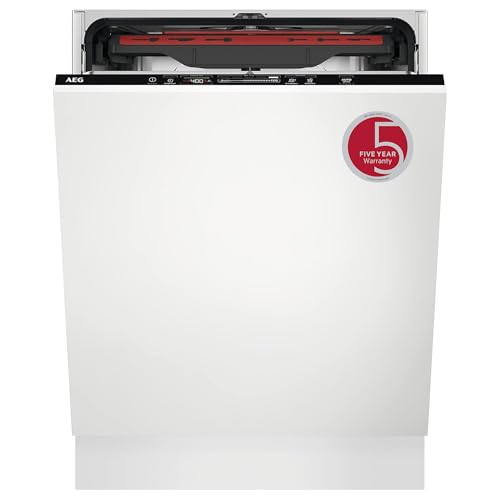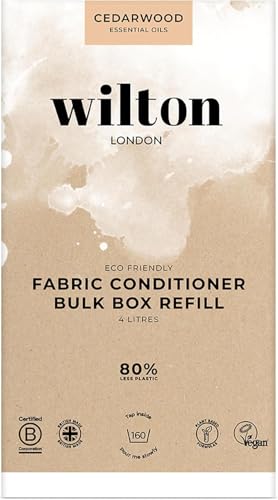




Do your towels feel rough and less absorbent than they used to? Over time, towels can accumulate detergent residue, fabric softener buildup, and minerals from hard water, resulting in dingy and stiff linens. If you’re tired of your towels losing their softness, it might be time to strip them.
Stripping your towels is a simple process that involves removing all the built-up residue and restoring their plushness and absorbency. Not only will this refresh your towels, but it can also prolong their lifespan, saving you money in the long run. This step-by-step guide will walk you through the easy process of stripping your towels to make them feel as good as new.
Step 1: Gather your supplies.
Before you begin, make sure you have everything you need. You’ll need hot water, a large tub or basin big enough to hold all your towels, a quarter cup of borax, a half cup of washing soda, and your regular laundry detergent. Borax and washing soda are both natural laundry boosters that will help break down residue and soften your towels.
Step 2: Fill the tub with hot water.
Fill your tub or basin with hot water. Make sure the water is hot enough to dissolve the borax and washing soda effectively. The water should be about enough to completely immerse all your towels without overflowing. Aim for a water temperature of around 140°F (60°C).
Step 3: Add the cleaning agents.
Add a quarter cup of borax and a half cup of washing soda to the hot water. Stir the water gently to dissolve the powder. The borax and washing soda will work together to break up the residue and minerals trapped in your towels, allowing them to be washed away.
Step 4: Submerge and soak your towels.
Place your towels into the tub and make sure they are fully submerged. Allow the towels to soak in the hot water and cleaning solution for at least four hours or overnight if possible. This extended soak will help loosen and remove even the most stubborn residue from your towels.
Step 5: Wash and dry as usual.
After the soaking time is up, drain the water from the tub and transfer your towels to the washing machine. Run them through a regular wash cycle using your usual laundry detergent. Once washed, dry your towels as you normally would. You’ll notice the difference in softness and absorbency as soon as they come out of the dryer.
Now that you know how to strip your towels, you can enjoy softer, more absorbent linens every time you step out of the shower. Incorporate this simple process into your laundry routine every few months to keep your towels feeling fresh and luxurious for years to come.
Why You Should Strip Your Towels

Stripping your towels is a simple process that can have numerous benefits for both the look and feel of your linens. Whether you’re dealing with towels that have become rough and ineffective at drying or ones that have a lingering odor, stripping them can help restore their softness and freshness. Here are a few reasons why you should consider stripping your towels:
1. Remove Build-up:
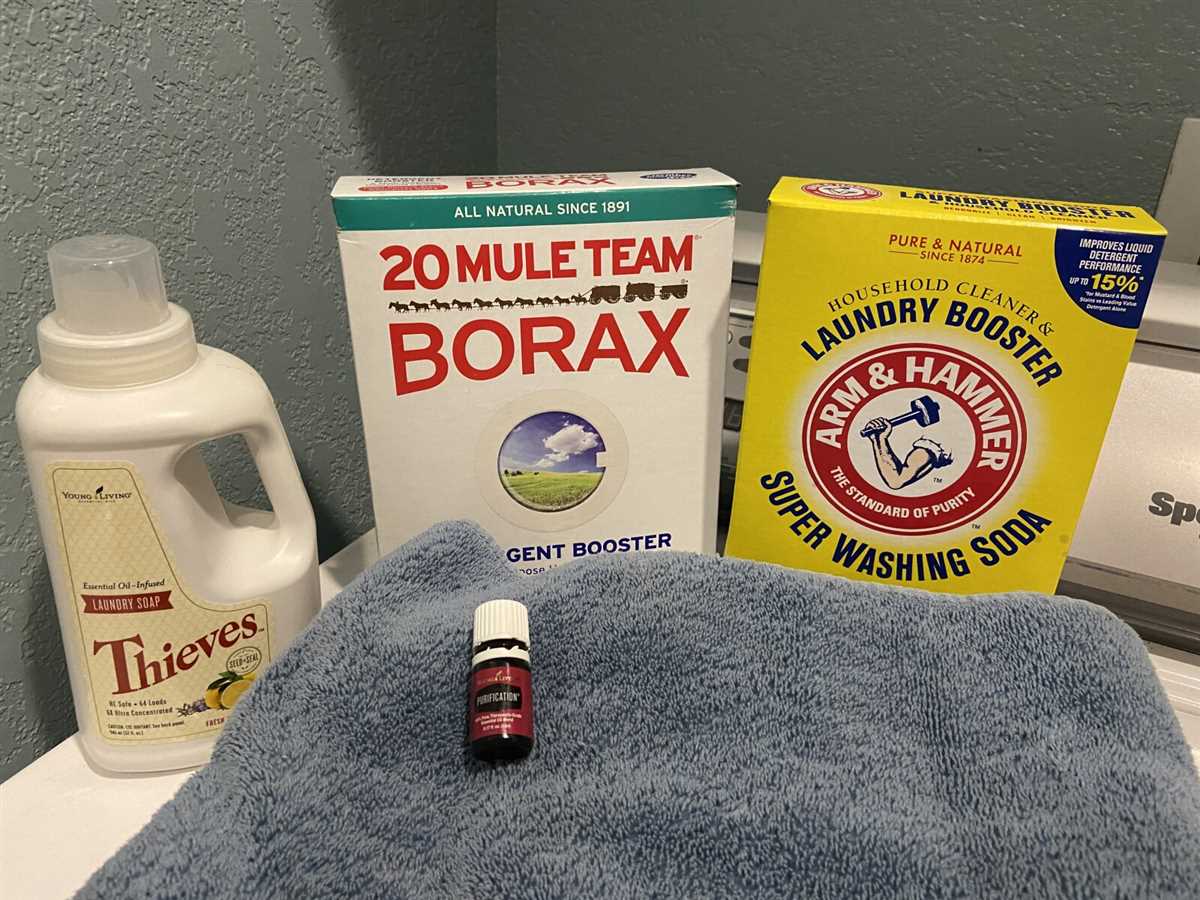
Over time, towels can accumulate build-up from various sources such as detergent residue, fabric softeners, body oils, and dead skin cells. This build-up can make towels less absorbent and leave them feeling coarse. Stripping your towels removes this build-up and rejuvenates the fibers, resulting in towels that can effectively absorb moisture again.
2. Eliminate Odors:
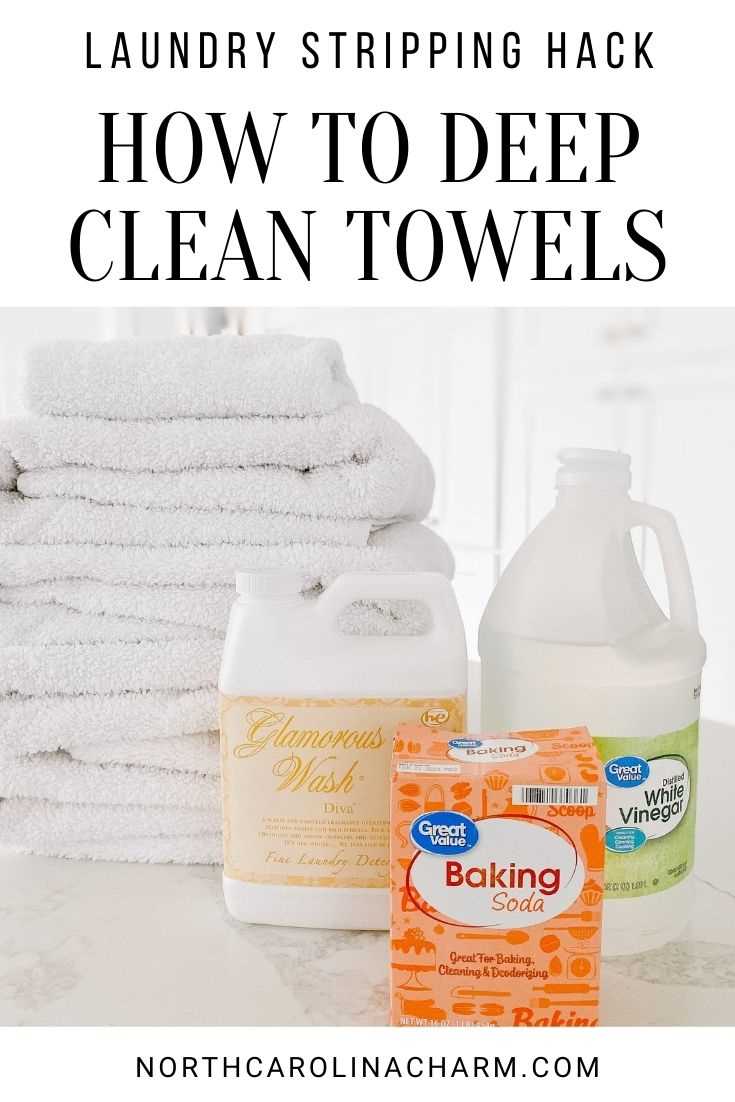
If your towels have developed a musty or mildew odor that lingers even after washing, stripping can help eliminate these odors. The combination of hot water, detergent, and other cleaning agents used in the stripping process helps break down and remove the bacteria causing the unpleasant smell, leaving your towels smelling fresh and clean.
3. Restore Softness:
Towels can lose their softness over time due to repeated use and washing. Stripping helps revive the softness of the fabric by removing any residues that may be causing the towels to feel rough. Once stripped, the towels will regain their soft texture, making them more luxurious to use and providing a gentle touch against your skin.
4. Prolong Lifespan:
By removing build-up and keeping your towels fresh and soft, stripping can help prolong their lifespan. Regularly stripping your towels can prevent them from becoming worn out and help maintain their quality over time. This means that you won’t have to replace your towels as frequently, resulting in cost savings in the long run.
5. Improve Performance:
Stripping your towels can also enhance their performance. By removing any residues that may be hindering absorption, stripped towels will be more effective at drying you off after a bath or shower. This can save you time and effort and ensure a better overall experience when using your towels.
Overall, stripping your towels is a worthwhile investment of time and effort. It can restore the look, feel, and functionality of your linens, ensuring that you can enjoy soft, fresh, and absorbent towels for longer.
The Benefits of Stripping Your Towels
Stripping your towels is a simple and effective method for refreshing and softening your linens. It involves removing build-up from detergent, fabric softener, and hard water minerals, which can accumulate over time and make your towels feel stiff and less absorbent. Here are some of the key benefits of regularly stripping your towels:
1. Improved Absorbency
Over time, towels can lose their absorbency due to the build-up of detergent residue and other substances. Stripping helps remove these residues, allowing your towels to regain their ability to absorb water effectively. This means you can dry yourself more efficiently, leaving you feeling refreshed after every use.
2. Enhanced Softness
As towels get used and washed repeatedly, they can become rough and less soft to the touch. Stripping helps restore the softness of your towels by removing the build-up that can make them feel stiff. After stripping, you’ll love the cozy and comforting feel of your towels against your skin.
3. Odor Elimination
Towels that are constantly exposed to moisture can develop an unpleasant musty smell over time. Stripping your towels helps eliminate this odor by removing the bacteria and mildew that can contribute to the unwanted scent. After stripping, your towels will smell fresh and clean, enhancing your overall bathing experience.
4. Prolonged Lifespan
Regularly stripping your towels can help prolong their lifespan. By removing the build-up that can cause fibers to break down, your towels will stay in better condition for longer. This means you won’t have to replace them as frequently, saving you money in the long run.
5. Eco-Friendly Practice
Stripping your towels is an eco-friendly practice. By removing build-up and restoring your towels’ absorbency and softness, you can reduce the need for excessive detergent and fabric softener in future washes. This helps minimize your environmental impact and promotes sustainable living.
| Benefits | Summary |
|---|---|
| Improved Absorbency | Allows towels to regain their ability to absorb water effectively |
| Enhanced Softness | Restores the softness of towels, making them more comfortable to use |
| Odor Elimination | Helps remove bacteria and mildew that can cause unpleasant smells |
| Prolonged Lifespan | Reduces the breakdown of fibers, keeping towels in better condition for longer |
| Eco-Friendly Practice | Reduces the need for excessive detergent and fabric softener, promoting sustainable living |
Overall, stripping your towels is a simple yet effective way to refresh and revitalize your linens. By removing build-up and odors, you can enjoy the benefits of softer, more absorbent towels, leading to a better bathing experience. Plus, it’s an eco-friendly practice that helps protect the environment. So why not give it a try and see the difference it can make for your towels?
Materials Needed for Stripping
To strip your towels and refresh them, you will need the following materials:
- 1 cup of washing soda
- 1/2 cup of borax
- 1 cup of white vinegar
- Hot water
- A large tub or basin
- A stirring stick or spoon
- A clothesline or drying rack
- Baking soda (optional)
The washing soda and borax will help to remove any build-up and odors from your towels, while the white vinegar will help to soften the fabric and remove any remaining residue. Hot water is essential for breaking down the dirt and grime on your towels.
A large tub or basin is needed to soak your towels in the stripping solution, allowing them to thoroughly absorb the cleaning agents. You can use a plastic storage tub, a sink, or any clean container that is large enough to hold your towels.
A stirring stick or spoon will be useful to mix the stripping solution and ensure that all the ingredients are evenly distributed. You can use a wooden spoon, a rubber spatula, or any utensil that is long enough to reach the bottom of your tub.
After you have stripped your towels, it is important to hang them to dry. A clothesline or drying rack will allow air to circulate around the towels and help them dry faster. Make sure the chosen surface is clean and sturdy enough to support the weight of wet towels.
Baking soda is optional but can be helpful in neutralizing any lingering odors in your towels. You can sprinkle a small amount of baking soda over your towels before hanging them to dry, or add it to the washing machine when you wash them.
Step 1: Preparing Your Towels
Before you begin the process of stripping your towels to refresh and soften them, it’s important to gather all the necessary supplies and prepare your towels properly. Here are the steps to follow:
1. Gather Your Supplies
Make sure you have the following supplies on hand:
- Hot water
- Borax
- Washing soda
- Vinegar
- Detergent
2. Sort Your Towels
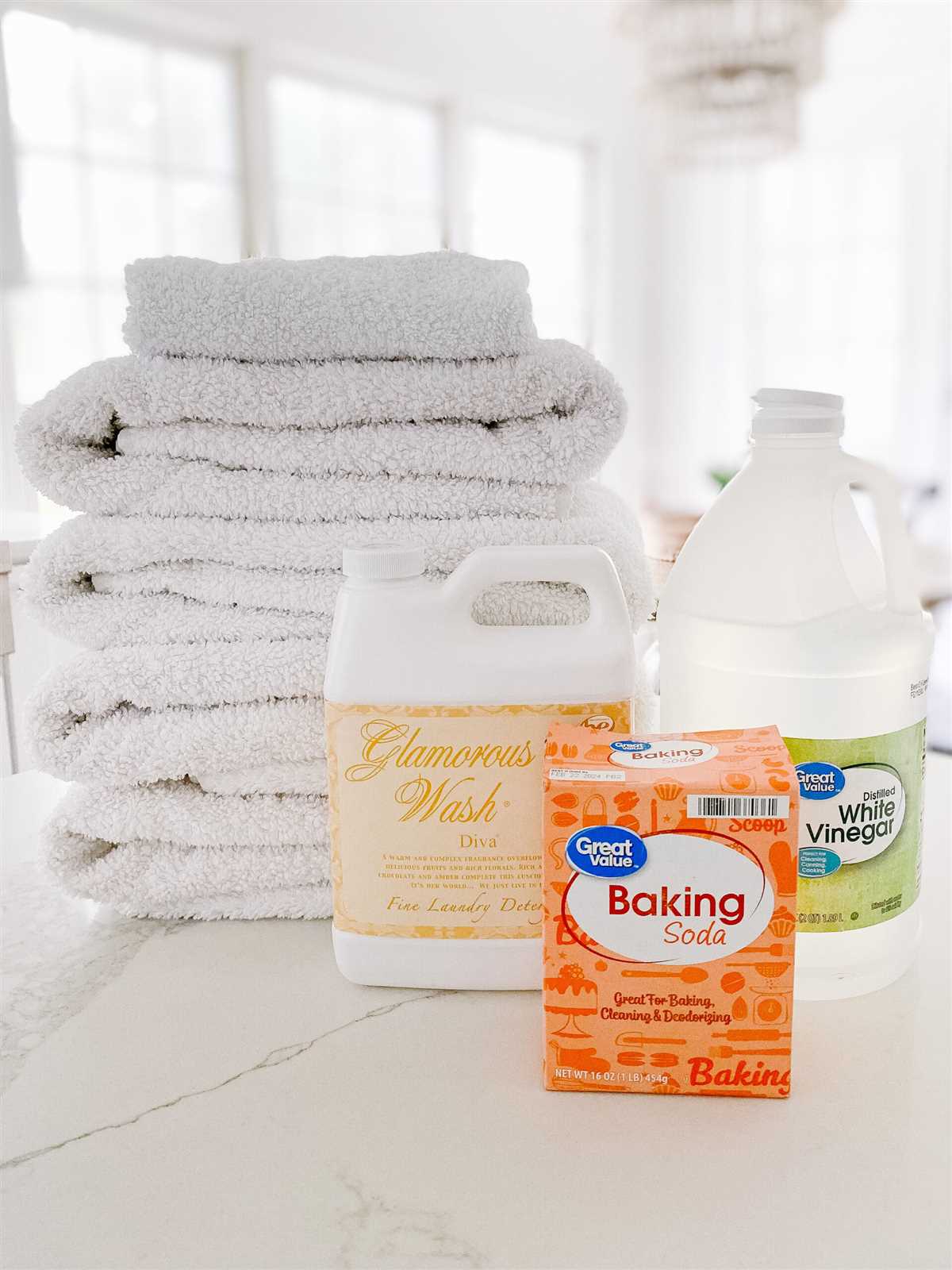
Separate your towels by color and fabric type. This will prevent any bleeding of colors or damage to delicate towels.
3. Check for Stains
Inspect each towel for stains. It’s best to pretreat any stains before starting the stripping process for optimal results.
4. Fill a Large Tub or Sink
Fill a large tub or sink with hot water. Make sure you have enough water to fully submerge all your towels.
5. Add the Stripping Agents
Add 1/2 cup of borax and 1/2 cup of washing soda to the hot water in the tub or sink. Stir until the powders are fully dissolved.
6. Submerge the Towels
Place your towels in the tub or sink, making sure they are fully submerged. You may need to do this in batches if you have a large quantity of towels.
7. Soak the Towels
Allow the towels to soak in the stripping solution for at least 4 hours, or overnight for best results. This will help to remove any built-up residue and freshen up the fabric.
8. Drain the Water
Once the soaking time is complete, drain the water from the tub or sink.
9. Rinse the Towels
Rinse the towels thoroughly with warm water to remove any remaining stripping solution.
10. Wash the Towels
Place the towels in your washing machine and add detergent. Wash them on a regular cycle using warm water.
11. Add Vinegar
During the final rinse cycle, add 1 cup of vinegar to the washing machine to help soften the towels and remove any remaining residue.
12. Dry the Towels
Remove the towels from the washing machine and shake them out to fluff them up. Hang them to dry or tumble dry on a low heat setting.
Following these steps will help you prepare your towels for the stripping process and ensure that they come out refreshed and softened.
Gather Your Stripping Materials
Before you begin the process of stripping your towels, it’s important to gather all the necessary materials. Luckily, you only need a few items, most of which you probably already have on hand.
- Hot water
- Borax
- Washing soda
- Vinegar
- Detergent
Hot water is essential for activating the stripping process, so make sure you have access to it. Borax and washing soda are both powerful cleaning agents that will help break down built-up residue in your towels. Vinegar can be used as a natural fabric softener and will also help remove any lingering odors. Finally, you’ll need your regular detergent to give your towels a good clean after the stripping process.
Once you have gathered all the necessary materials, you are ready to move on to the next step in refreshing and softening your towels.
Pre-treat Any Stains
If you notice any stains on your towels before stripping them, it’s best to pre-treat them before starting the process. This will help ensure that the stains are fully removed and that your towels are left looking fresh and clean. Here’s how you can pre-treat stains on your towels:
- Identify the stains: Take a close look at your towels and identify any stains that may be present. Common stains on towels include makeup, oil, food, and dirt.
- Read the care label: Check the care label on your towels to see if there are any specific instructions for pre-treating stains. Follow these instructions if provided.
- Pre-treat the stains: Depending on the type of stain, you can use different methods to pre-treat them:
- Makeup stains: Dab a small amount of liquid laundry detergent onto the stain and gently rub it in. Let it sit for a few minutes before moving on to the next step.
- Oil stains: Sprinkle baking soda or cornstarch onto the stain and let it sit for a few minutes. Then, use a clean cloth or sponge to blot the stain, absorbing as much oil as possible.
- Food stains: Mix a solution of equal parts water and white vinegar. Apply this solution to the stain and let it sit for a few minutes. Then, blot the stain with a clean cloth or sponge.
- Dirt stains: Wet the stain with water and apply a small amount of liquid laundry detergent. Gently rub the detergent into the stain using your fingers or a soft brush.
- Let it sit: After pre-treating the stains, let the towels sit for about 15-30 minutes. This will allow the pre-treatment to penetrate the stains and make them easier to remove during the stripping process.
- Rinse: Rinse the pre-treated towels under cold water to remove any excess pre-treatment solution and loosened stains.
By pre-treating stains on your towels, you can ensure that they come out looking fresh and clean after the stripping process. This step will help remove any stubborn stains and prevent them from setting in during the stripping process.
Step 2: Soaking Your Towels
Soaking your towels is an important step in the process of refreshing and softening them. This helps to remove built-up dirt, oils, and other residues that can make your towels feel stiff and less absorbent. Here’s how to properly soak your towels:
- Prepare a basin or container: Find a basin or container that is large enough to hold all of your towels. It should be deep enough to fully submerge the towels in water.
- Fill the basin with warm water: Fill the basin with warm water. The water should be warm, but not too hot. Hot water can damage the fibers of your towels.
- Add a gentle cleaning agent: Pour a gentle cleaning agent, such as mild detergent or white vinegar, into the warm water. These cleaning agents help to break down dirt and oils on your towels.
- Submerge the towels: Place your towels into the basin, making sure they are fully submerged in the water. Gently swirl the towels around to ensure that the cleaning agent is evenly distributed.
- Let them soak: Allow the towels to soak in the water for at least 30 minutes. This will give the cleaning agent enough time to work its magic on the dirt and oils.
- Gently agitate the towels: After the soaking time is up, gently agitate the towels with your hands. This will help to release any remaining dirt and oils from the fibers.
- Drain and rinse: Drain the soapy water from the basin and rinse the towels with clean, warm water. Make sure to rinse them thoroughly to remove any residue from the cleaning agent.
- Wring out excess water: After rinsing, gently wring out the towels to remove excess water. Avoid twisting or wringing them too hard, as this can damage the fibers.
Once you have completed these steps, you can move on to the next step in the process: drying your towels. By soaking your towels, you are ensuring that they are thoroughly cleaned and ready to be refreshed and softened.
FAQ
Why do I need to strip my towels?
Stripping your towels helps remove built-up residue, dirt, and oils that regular washing alone may not be able to remove. This process helps refresh and soften your towels, making them feel like new.
What materials do I need to strip my towels?
To strip your towels, you will need hot water, borax or washing soda, and white vinegar. You may also want to use some laundry detergent.
Can I strip both old and new towels?
Yes, you can strip both old and new towels. Stripping is particularly beneficial for older towels that have become stiff or lost their absorbency over time. It can also help remove any residue from new towels and make them softer.
How often should I strip my towels?
You can strip your towels every 1-3 months, depending on how frequently you use them. If your towels start feeling stiff or less absorbent, it’s a good indication that they may need stripping.
Can I use fabric softener when washing my towels after stripping?
No, it is recommended to avoid using fabric softener when washing your towels after stripping. Fabric softener can leave a residue on the towels, reducing their absorbency. Instead, you can add a cup of white vinegar during the rinse cycle to help soften the towels.



